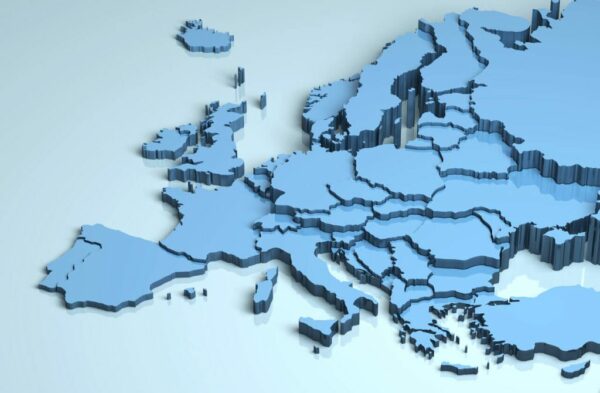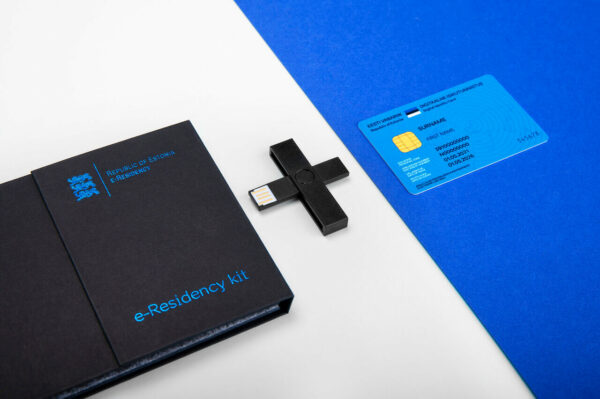
e-Residency
- |
Estonia goes digital to end bureaucracy
Everything from birth certificates to drug prescriptions can be obtained online
A card shows all the details to be inputted online to register the birth of new baby Oskar Lunde in Estonia. The government is moving to digitize major services to eliminate paperwork and bureaucracy. (David Keyton/Associated Press)In the Estonian capital of Tallinn, three-day-old Oskar Lunde sleeps soundly in his hospital cot, snuggled into a lime green blanket decorated with red butterflies. Across the room, his father turns on a laptop.”Now we will register our child,” Andrejs Lunde says with gravity as he inserts his ID card into the card reader. His wife, Olga, looks on proudly.And just like that, Oskar is Estonia’s newest citizen. No paper. No fuss.This Baltic country of 1.3 million people is engaged in an ambitious project to make government administration completely digital to reduce bureaucracy, increase transparency and boost economic growth. As more countries shift their services online, Estonia’s experiment offers a glimpse of how interacting with the state might be for future generations.Need a prescription? It’s online. Need someone at city hall? No lines there — or even at the driver’s licence office. On the school front, parents can see whether their children’s homework was done on time.Estonia has created one platform that supports electronic authentication and digital signatures to enable paperless communications across both the private and public sectors.There are still a few things that you can’t do electronically in Estonia: marry, divorce or transfer property — and that’s only because the government has decided it was important to turn up in person for some big life events.This spring, government aims to go even further. If Oskar had been born a few months later, he would have been registered automatically, with his parents receiving an email welcoming him into the nation.
Estonia is proud of its digital achievements, some of which are displayed at an exhibition in the capital, Tallinn. The country is the home of Skype, among other things. (David Keyton/Associated Press)Marten Kaevats, Estonia’s national digital adviser, says the goal is a government that supports its citizens while staying out of the way.”In an ideal world, in the case of an invisible government, when a new child is born neither of the parents would ever have to apply for anything: to get maternity leave, to get child support from the municipality, to get a kindergarten place, to put the name to the child,” he said. “All of those different services would be delivered automatically.”
Pet dog’s vaccination record
Estonians largely seem to have embraced the system despite global concerns about data hacks.At a demonstration showcasing the digital system, project manager Indrek Onnik stood beside a huge screen illustrating his profile. He showed off his high school grades from a decade ago and his diving license records. If he had a dog, its vaccination record would appear there, too.Citizens can monitor their data and see if any government or private institution accesses it.”To generate trust, you really have to have transparency,” he said. “And that’s why people have access to their own data. And that’s why they can actually see if the government has used their own data.”The platform is underpinned by software called X-Road, a decentralized data exchange system that links databases. Outgoing data is digitally signed and encrypted, and all incoming data is authenticated and logged.The digital-services project, which began in 1997, laid the groundwork for Estonia’s booming tech sector. Skype, the video-calling service Microsoft bought for $8.5 billion in 2011, is Estonia’s most famous high-tech export, but the impact is broader. Information and communications accounted for 5.9 percent of the economy last year.The advances in digitization are the result of long-term thinking.When Estonia declared independence in 1991, the economy was so backward in this former Soviet republic it had to be rebuilt from scratch. The leadership looked for an industry where the country could compete. They decided on information technology and the internet, a field that was as new as Estonia, said former president Toomas Hendrik Ilves.When the cash-strapped country needed to replace a 1930s phone system, Finland offered a late 1970s analog system free of charge. But Ilves argued that the government should decline the offer and invest in digital technology.Ilves, who grew up in the United States and was introduced to computers in junior high, proposed getting kids started early. The government started building computer labs in schools. Banks supported the move, as it reduced the need for branches in rural villages. More than 99 percent of Estonia’s banking transactions now take place online.
‘People trust the system’
Whether Estonia’s system can be used in larger countries is an open question, said Zvika Krieger, head of technology policy and partnerships at the World Economic Forum.”When you add in more people, more diverse stakeholders, more layers of government at the city, state, and local level, you are adding in exponentially more complexity,” Krieger said.Estonia sees its approach as a prototype for modern democracy — a counterpoint to authoritarian countries intent on using digitization to control their citizens. Ilves, who travels around the world talking about the project, tells other countries that increased efficiency builds trust — and improves governance.”Estonians hate their politicians just as much as everyone else,” he said. “But at least since the administration of the state works extremely well and efficiently, people trust the system.”READ MORE
RELATED NEWS


